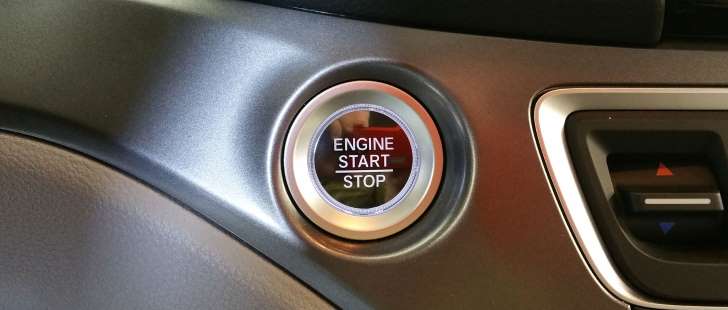Septemebr 15, 2015
In a striking example of the law of unintended consequences, a popular automotive convenience feature, push-button start, can lead to accidental death from carbon-monoxide poisoning. A simple technical fix—an attention-grabbing warning audible from outside the car—could head off the problem before it happens.

Septemebr 15, 2015
In a striking example of the law of unintended consequences, a popular automotive convenience feature, push-button start, can lead to accidental death from carbon-monoxide poisoning. A simple technical fix—an attention-grabbing warning audible from outside the car—could head off the problem before it happens.

In cars that have keyless, push-button ignition, an electronic key fob is recognized by the car to authorize driving and the use of power accessories. That fob can conveniently remain in the driver’s pocket or purse, as the ignition switch itself is just a button on the dash.
Danger can arise, though, if a driver inadvertently leaves the car running when exiting the vehicle—an easy thing to do intentionally or accidentally. Even if you take the key fob with you, the engine can keep idling. If the car is parked in a closed garage attached to a house, especially a basement-level garage, carbon monoxide fumes from the idling engine may seep into the living area, possibly harming anyone in the house.
A subset of keyless-ignition cars, hybrids and plug-in hybrids, pose an even stealthier problem, because they are virtually silent when in electric mode, which they may well be when sitting still after parking. A driver doesn’t have to be absent-minded to assume that the car is shut down—after all, the engine isn’t running. But the car may not be truly off. The engine could restart itself, say to address a climate control need, potentially sending carbon monoxide into the residence.
News reports have linked more than a dozen carbon-monoxide deaths to keyless ignitions, and a number of lawsuits have been filed against automakers including a potential class action suit against the 10 largest automakers, filed in late August. That suit, brought in California, alleges that automakers have known about this issue for years but ignored it.
However, many vehicles already try to warn someone that they’ve left the car running. They sound either an external chime or a chirp of the horn, if drivers leave the engine idling and walk away with the electronic fob. A quick scan of our current test-car fleet turned up both kinds of signals, chimes and horn chirps, and some cars that remain quiet. Those cars with audible alerts included new models made by Ford, GM, Honda, Hyundai, Mazda, Mitsubishi, Nissan, and Toyota. Those with no audible warning came from recent examples from Chrysler, Land Rover, Mercedes-Benz, Volkswagen, and Volvo.
Rules for warnings
The National Highway Traffic Safety Administration (NHTSA) has been aware of this issue for some years. NHTSA hasn’t put related rules in place, but not for lack of trying. The agency attempted to make that audible alert mandatory but some automakers objected, arguing that the proposed sound level was “much too loud” and would be an annoyance.
Another approach, and one demanded by the California class action launched this August, is an automatic engine shut-off. If a car is left idling, it would shut down after some specified period, say 30 minutes, and stay off until a person restarts it.
NHTSA, however, raised a concern about making such a system mandatory in proposed rule documentation filed with the Federal Register: “There are scenarios, such as leaving pets in the vehicle with the air conditioning or heating system on while the driver shops or is at a restaurant, where an automatic shut off of the propulsion system would have adverse results.”
Consumer Reports thinks that a simple reminder is a good thing, and we would like to see it on every car with push-button start/stop.
Courtesy: Consumer Reports
















































































































